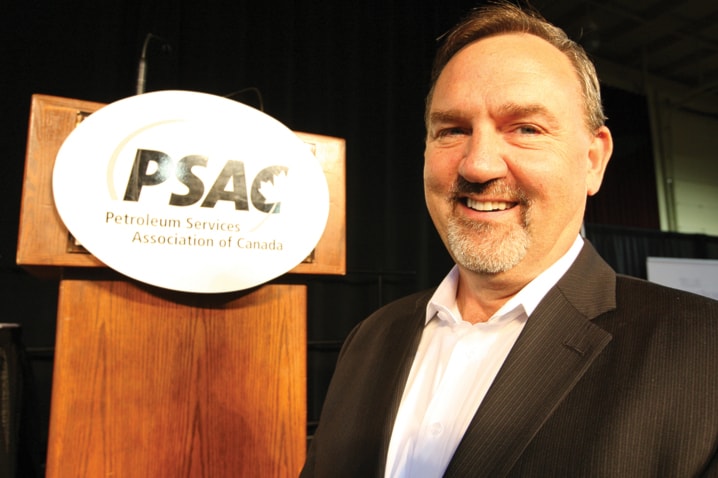Mark Salkeld describes a scene that seems more science fiction than technological fact.
An engineer in a special theatre room guides a wellbore through a holograph-like image of an underground formation, demonstrating to an oil company official how the hydrocarbons therein might best be extracted.
“They’re standing right inside the customer’s formation and they can move the formation, they can steer the (drill) bit and they can help them design their wells,” said Salkeld, who is president and CEO of the Petroleum Services Association of Canada.
Such advanced production practices are helping energy companies further develop mature reservoirs like the Pembina oil field near Red Deer, he said.
“If you get a wavy formation, they can steer that drill bit for perfect positioning.”
Salkeld, and about 250 representatives of companies in the upstream petroleum industry, are in Red Deer this week for PSAC’s spring conference. The mood is upbeat, with crude oil trading at more than $100 a barrel and indications strong that 2012 will be another busy year.
“Land sales are on the increase,” said Salkeld, noting that revenues collected by the Alberta government for conventional oil and gas rights during the past fiscal year should be comparable to the record $2.66 billion earned by the province in 2010-11.
“That’s one of our prime indicators.”
Those sales reveal a strong emphasis on oil and liquid-rich gas plays, he added, as producers shy away from low-priced natural gas.
“Gas is still a very, very sad story,” said Salkeld.
The more positive theme are the improved production techniques on the oil side. In addition to the accuracy with which reservoirs can be mapped, directional drilling and multi-stage fracturing is enabling producers to extract their contents more efficiently.
Salkeld also noted how multiple wells are being drilled from a single pad site. Equipment and manpower can be concentrated there, and are not required to move as frequently.
“If they can get all their equipment into the location and not have to move for a month or two while they work over all the wells they drilled, that just extends the season for us.”
The surface footprint is also much smaller for the underground area accessed, he added.
In 1970, said Salkeld, about 20 acres of land had to be cleared for a vertical well that would provide only 0.8 of an acre of below-surface access. Thirty years later, a multi-well pad site requires just 0.2 acres of surface area but can reach more than 80 square miles below.
Challenges do exist, with access to skilled labour key among these.
A year ago, the Petroleum Human Resources Council of Canada issued a report that projected the domestic petroleum industry would need 39,000 to 130,000 additional workers by 2020. Salkeld doubts the situation has improved, noting that a lot of oilfield equipment sat idle this winter because there weren’t people to operate them.
Heavy duty mechanics, truck drivers, heavy equipment operators and welders are all in short supply, as are rig managers and oilfield supervisors.
PSAC is exploring ways to ease the crunch, he said, including identifying underutilized skilled labour pools in Canada and abroad.
“We’re looking domestically in Canada first, North America kind of second and then globally third.”
Regulatory constraints are another industry concern, said Salkeld. He doesn’t object to strict controls on drilling and production, but is frustrated by duplication and long timelines.
Salkeld also said the Canadian petroleum industry needs to better communicate to the public that it’s acting appropriately and responsibly.
“That’s something we’ve fallen short on and need to work on constantly.”
PSAC’s spring conference began Monday and wraps up today. It’s being held at the Sheraton Red Deer Hotel.
hrichards@www.reddeeradvocate.com
